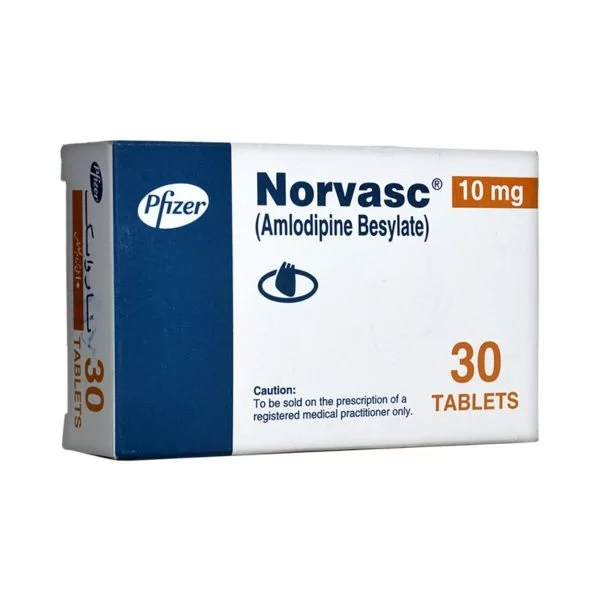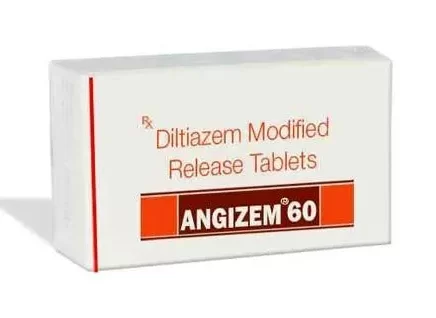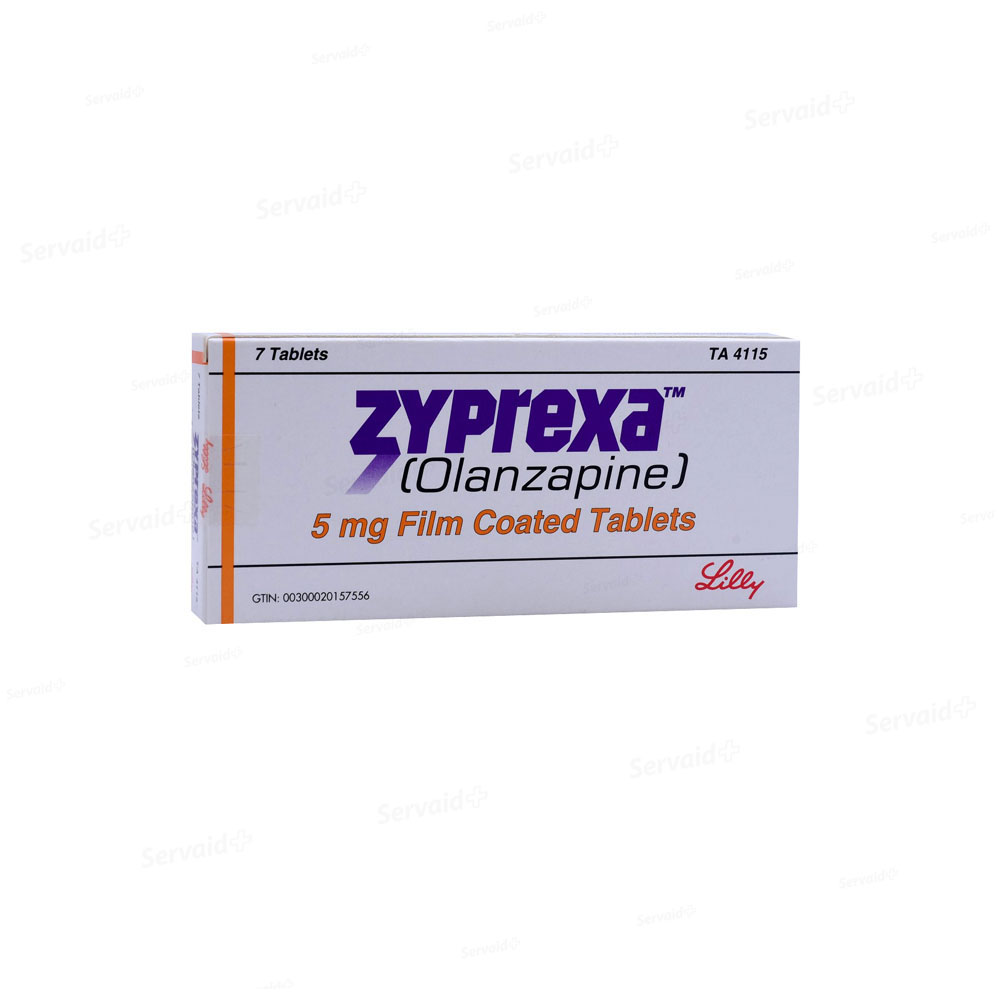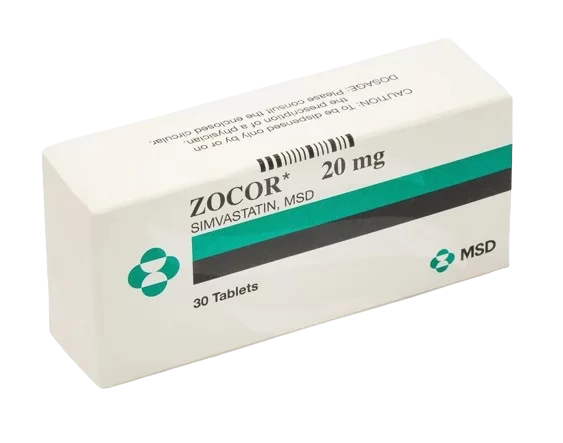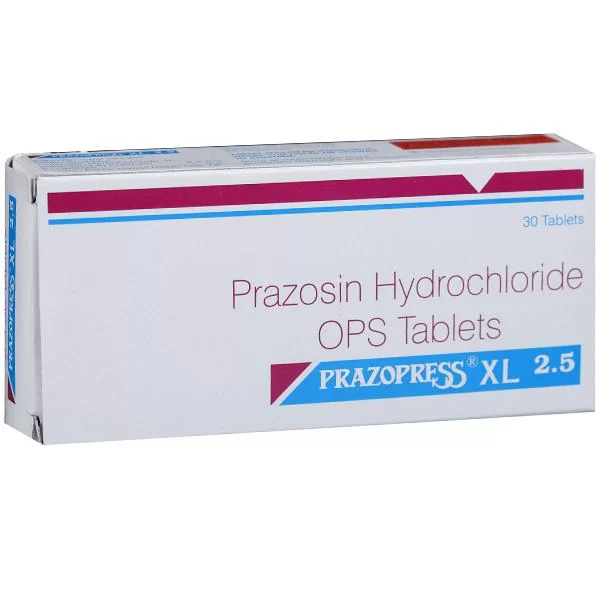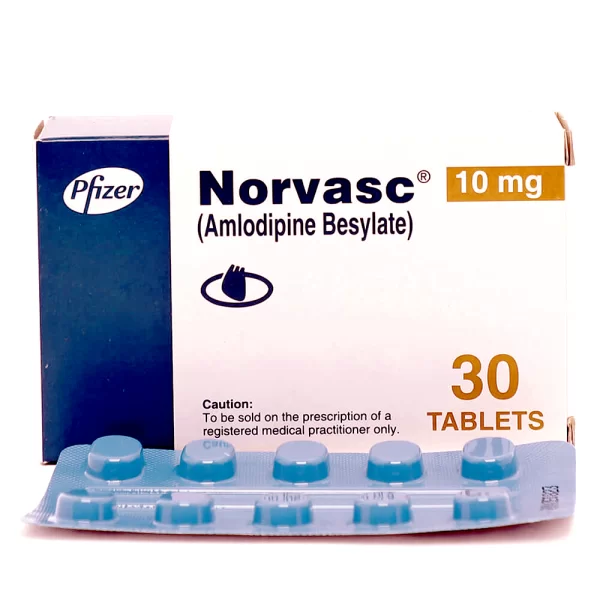
Norvasc
Norvasc - 10mg
| Product | Per Pill | Savings | Per Pack | Order |
|---|---|---|---|---|
| 30 pills | $1.07 | $32.06 | Buy Now | |
| 60 pills | $0.84 | $13.64 | $64.12 $50.48 | Buy Now |
| 90 pills | $0.77 | $27.28 | $96.18 $68.90 | Buy Now |
| 120 pills | $0.73 | $40.92 | $128.25 $87.33 | Buy Now |
| 180 pills | $0.69 | $68.21 | $192.38 $124.17 | Buy Now |
| 270 pills | $0.66 | $109.13 | $288.56 $179.43 | Buy Now |
| 360 pills | $0.65 | $150.05 | $384.75 $234.70 | Buy Now |
Norvasc - 5mg
| Product | Per Pill | Savings | Per Pack | Order |
|---|---|---|---|---|
| 90 pills | $0.48 | $43.30 | Buy Now | |
| 180 pills | $0.40 | $13.86 | $86.61 $72.75 | Buy Now |
| 270 pills | $0.38 | $27.71 | $129.90 $102.19 | Buy Now |
| 360 pills | $0.37 | $41.57 | $173.21 $131.64 | Buy Now |
| 90 pills | $0.41 | $36.45 | Buy Now | |
| 180 pills | $0.34 | $12.15 | $72.90 $60.75 | Buy Now |
| 270 pills | $0.32 | $24.30 | $109.35 $85.05 | Buy Now |
| 360 pills | $0.30 | $36.45 | $145.80 $109.35 | Buy Now |
Overview of Norvasc
General Introduction
Norvasc, known by its generic name amlodipine, is a calcium channel blocker used primarily to treat high blood pressure (hypertension) and chest pain (angina). By relaxing the blood vessels, Norvasc helps reduce blood pressure and improve blood flow. This medication is commonly prescribed to prevent certain types of chest pain (angina) and to improve exercise tolerance in patients with chronic stable angina. Norvasc is available in tablet form and is typically taken once daily.
History of Development and Approval
Amlodipine was developed in the early 1980s and received approval from the U.S. Food and Drug Administration (FDA) in 1992. Since then, it has become a widely used medication for managing hypertension and angina due to its efficacy and favorable safety profile. Its long-acting formulation allows for once-daily dosing, enhancing patient compliance.
Key Benefits
Norvasc offers several key benefits for patients with hypertension and angina:
- Effective Blood Pressure Control: Helps lower high blood pressure, reducing the risk of strokes and heart attacks.
- Chest Pain Prevention: Reduces the frequency and severity of angina attacks.
- Improved Exercise Tolerance: Enhances the ability to engage in physical activities without experiencing chest pain.
- Once-Daily Dosing: Convenient administration improves adherence to the treatment regimen.
Unique Properties
Norvasc is unique due to its long half-life, which provides sustained blood pressure control and angina prevention with once-daily dosing. Its gradual onset of action helps minimize the risk of sudden drops in blood pressure, making it a well-tolerated option for many patients.
Comparison with Similar Medications
Compared to other calcium channel blockers, Norvasc offers distinct advantages:
- Long-Acting Formula: Provides 24-hour blood pressure control with a single daily dose.
- Low Risk of Side Effects: Generally well-tolerated with fewer side effects compared to some other antihypertensive medications.
- Versatile Use: Effective for both hypertension and angina, reducing the need for multiple medications.
Safety and Tolerability
Norvasc is generally well-tolerated when used as directed. Common side effects include swelling of the legs or ankles, dizziness, and flushing. Serious side effects are rare but may include severe allergic reactions. Regular monitoring by a healthcare provider is recommended, especially during the initial phase of treatment, to ensure patient safety and optimal therapeutic outcomes.
Indications for Use
Diseases and Conditions Treated
Norvasc is prescribed for:
- Hypertension (High Blood Pressure): Helps lower blood pressure to prevent cardiovascular events.
- Angina (Chest Pain): Effective in preventing and reducing the severity of angina attacks, including chronic stable angina and vasospastic angina (Prinzmetal’s angina).
Symptoms Indicating Use
Patients experiencing high blood pressure or recurrent chest pain may benefit from Norvasc. It is particularly effective for individuals who require long-term management of hypertension and angina with minimal side effects.
Dosage and Administration
Recommended Dosage for Adults
The typical starting dose of Norvasc for adults with hypertension is 5 mg once daily. Depending on the patient's response and tolerance, the dose can be increased to a maximum of 10 mg per day. For angina, the recommended dose is also 5 mg to 10 mg once daily.
Dosage for Children
For children aged 6 to 17 years with hypertension, the recommended starting dose is 2.5 mg to 5 mg once daily. Pediatric dosing should always be determined by a healthcare provider to ensure safety and efficacy.
Dosage for Elderly Patients
Elderly patients may require lower starting doses due to increased sensitivity to the medication. A starting dose of 2.5 mg once daily may be recommended, with gradual adjustments based on response and tolerance. Regular monitoring is important to ensure the medication’s effectiveness and safety.
Optimal Timing of Administration
Norvasc should be taken once daily at the same time each day, with or without food. Consistent timing of administration helps maintain stable blood levels of the medication and enhances its effectiveness.
Frequency of Administration
Norvasc is typically administered once daily. Adhering to the prescribed frequency ensures the medication's effectiveness and minimizes the risk of missed doses.
Impact of Food on Efficacy
Food does not significantly impact the efficacy of Norvasc, allowing for flexible administration with or without meals. Consistent timing relative to meals helps maintain stable blood levels and optimal therapeutic outcomes.
Pharmacological Action
Mechanism of Action
Amlodipine, the active ingredient in Norvasc, works by inhibiting the influx of calcium ions into vascular smooth muscle and cardiac muscle cells. This action relaxes the blood vessels, reducing blood pressure and improving blood flow. It also reduces the workload on the heart, helping to prevent angina attacks.
Molecular and Cellular Targets
Amlodipine targets L-type calcium channels in the vascular smooth muscle and cardiac muscle cells. By blocking these channels, it prevents calcium from entering the cells, leading to vasodilation and decreased peripheral resistance.
Metabolic Pathways
Amlodipine is extensively metabolized in the liver to inactive metabolites, which are then excreted via the urine. The half-life of amlodipine is approximately 30 to 50 hours, allowing for sustained therapeutic effects with once-daily dosing.
Biochemical Changes
By blocking calcium channels, Norvasc reduces the contractility of vascular smooth muscle and decreases peripheral resistance. This biochemical change helps lower blood pressure and reduce the frequency of angina attacks.
Physiological Effects
The physiological effects of Norvasc include lowered blood pressure, reduced frequency and severity of angina attacks, and improved exercise tolerance. Patients may experience enhanced cardiovascular health and a reduction in hypertension-related complications.
Composition
Active Ingredient
The active ingredient in Norvasc is amlodipine besylate. It is available in various strengths, including 2.5 mg, 5 mg, and 10 mg tablets.
Inactive Ingredients
Inactive ingredients in Norvasc tablets may include microcrystalline cellulose, calcium phosphate, magnesium stearate, and sodium starch glycolate. These ingredients help in the formulation and stability of the medication, ensuring that it is effective and safe for patient use.
Role of Each Component
Amlodipine besylate acts as the primary therapeutic agent, while inactive ingredients ensure proper formulation, stability, and absorption of the medication. The inactive ingredients also contribute to the tablet’s integrity and ease of administration.
Side Effects
Common Side Effects
Common side effects of Norvasc include:
- Swelling of the Legs or Ankles: Due to fluid retention.
- Dizziness: Especially when standing up quickly.
- Flushing: A sensation of warmth or redness in the face.
- Palpitations: Irregular or rapid heartbeats.
Rare Side Effects
Rare side effects may include:
- Severe Allergic Reactions: Symptoms such as difficulty breathing, swelling of the face, lips, or tongue.
- Severe Hypotension: Significantly low blood pressure.
- Hepatotoxicity: Liver function abnormalities.
Serious Side Effects
Serious side effects requiring immediate medical attention include:
- Severe Allergic Reactions: Symptoms such as difficulty breathing, swelling of the face, lips, or tongue.
- Severe Hypotension: Significantly low blood pressure leading to fainting or shock.
- Hepatotoxicity: Symptoms such as jaundice, dark urine, and abdominal pain.
Frequency and Severity
Most side effects are mild and transient, occurring primarily during the initial phase of treatment. Serious side effects are rare but warrant close monitoring by a healthcare provider. Regular follow-up appointments can help manage and mitigate these risks.
Prevention of Side Effects
General Precautions
To minimize side effects, patients should follow the prescribed dosage and avoid taking more than the recommended dose. It is important to inform the healthcare provider of any existing medical conditions and medications being taken, particularly those that may interact with Norvasc.
Recommendations for Better Tolerability
Using Norvasc as directed and maintaining regular follow-up appointments with a healthcare provider can improve tolerability. Patients should be educated on the importance of adhering to the prescribed treatment regimen and monitoring their response to the medication. Staying hydrated and avoiding sudden changes in posture can help reduce dizziness and other side effects.
Contraindications
Conditions and Diseases
Norvasc is contraindicated in patients with:
- Known Hypersensitivity: To amlodipine or any of its components.
- Severe Hypotension: Significantly low blood pressure.
- Cardiogenic Shock: A condition where the heart is unable to supply enough blood to the body.
- Severe Aortic Stenosis: A condition where the aortic valve is narrowed.
Explanation of Contraindications
Amlodipine may exacerbate certain conditions, such as severe hypotension or cardiogenic shock, due to its vasodilatory effects. Hypersensitivity reactions can cause severe allergic responses, making it crucial to assess a patient’s medical history before prescribing Norvasc.
Warnings and Precautions
Potential Risks
Patients should be monitored for signs of severe allergic reactions, hypotension, and liver function abnormalities, particularly during the initial phase of treatment. Regular follow-up appointments and communication with a healthcare provider are essential to ensure safe use.
Safety Measures
Regular monitoring by a healthcare provider, starting with a low dose, and adjusting as needed can help mitigate risks. Patients should be instructed to report any symptoms of severe allergic reactions, hypotension, or liver function abnormalities immediately.
Missed Dose
Immediate Actions
If a dose is missed, take it as soon as remembered unless it is almost time for the next dose. Do not double the dose to catch up. Continue with the regular dosing schedule to maintain consistent blood levels of the medication.
Preventive Strategies
Using reminders and keeping a consistent schedule can help prevent missed doses. Patients can set alarms, use medication reminder apps, or keep a medication diary to track their doses, ensuring adherence to the treatment regimen.
Drug Interactions
Interacting Medications
Norvasc may interact with various medications, including:
- CYP3A4 Inhibitors: Such as ketoconazole and erythromycin, which can increase the plasma concentration of amlodipine.
- CYP3A4 Inducers: Such as rifampin and St. John’s wort, which can decrease the plasma concentration of amlodipine.
- Other Antihypertensives: Such as beta-blockers and ACE inhibitors, which can enhance the blood pressure-lowering effects of Norvasc.
- Grapefruit Juice: Can increase the plasma concentration of amlodipine.
Effects of Interactions
These interactions can affect the metabolism and efficacy of Norvasc or the concomitant medications. For instance, combining Norvasc with CYP3A4 inhibitors can increase the risk of hypotension. Monitoring for side effects and adjusting dosages may be necessary to manage these interactions.
Avoiding Interactions
Inform the healthcare provider of all medications being taken to avoid potential interactions. Patients should not start, stop, or change the dosage of any medicines without their healthcare provider’s approval. Regular reviews of medication regimens can help identify and manage potential interactions.
Overdose
Symptoms of Overdose
Symptoms of overdose may include severe dizziness, fainting, and significantly low blood pressure. Seek emergency medical help if an overdose is suspected.
Immediate Actions
Seek emergency medical help if an overdose is suspected. Supportive measures and symptomatic treatment are recommended. Activated charcoal may be administered if the overdose is recent, and intravenous fluids may be given to maintain blood pressure and support cardiovascular function.
Pharmacokinetics
Absorption
Amlodipine is well-absorbed from the gastrointestinal tract, with peak plasma concentrations reached within 6 to 12 hours after oral administration. The bioavailability of amlodipine is approximately 64% to 90%.
Distribution
Amlodipine is widely distributed throughout the body and is extensively bound to plasma proteins. It has a large volume of distribution, indicating extensive distribution in tissues.
Metabolism
Amlodipine is extensively metabolized in the liver to inactive metabolites, which are then excreted via the urine. The half-life of amlodipine is approximately 30 to 50 hours, allowing for sustained therapeutic effects with once-daily dosing.
Elimination
The half-life of amlodipine is approximately 30 to 50 hours, allowing for effective symptom relief with once-daily dosing. It is excreted primarily in the urine as inactive metabolites.
Dosage Forms
Available Forms and Dosages
Norvasc is available in tablet form (2.5 mg, 5 mg, and 10 mg). These various forms and dosages allow for flexible and tailored treatment approaches based on patient needs and tolerability.
Benefits of Different Forms
The availability of multiple strengths of Norvasc makes it suitable for various patient preferences and clinical situations. Different formulations allow for precise dosing adjustments based on therapeutic response and individual patient needs.
Pregnancy and Breastfeeding
Safety During Pregnancy
Norvasc should be used during pregnancy only if the potential benefit justifies the potential risk to the fetus. There is limited data on the use of Norvasc in pregnant women, and animal studies have shown adverse effects on the fetus. Pregnant women should discuss the potential risks and benefits with their healthcare provider before starting treatment.
Safety During Breastfeeding
Amlodipine is excreted in human milk. Due to the potential for adverse reactions in nursing infants, a decision should be made whether to discontinue breastfeeding or discontinue the drug, considering the importance of the drug to the mother. Breastfeeding mothers should consult their healthcare provider to weigh the potential risks and benefits.
Storage Conditions
General Recommendations
Store Norvasc at room temperature between 20°C to 25°C (68°F to 77°F). Keep the medication in its original container, tightly closed, and out of reach of children and pets.
Specific Storage Instructions
Norvasc tablets should be stored in a cool, dry place away from direct sunlight and moisture. Store according to the manufacturer’s instructions to protect the medication from light and moisture.
Expiry and Stability
Check the expiration date on the package and do not use Norvasc past the expiration date. Proper storage ensures the medication remains effective and safe to use. Dispose of expired or unused medication according to local regulations to prevent accidental exposure or misuse.
Clinical Trials and Efficacy
Overview of Clinical Studies
Norvasc has undergone extensive clinical trials to evaluate its safety and efficacy in treating hypertension and angina. These studies included randomized, double-blind, placebo-controlled trials involving thousands of patients worldwide.
Results and Findings
Clinical trials have shown that Norvasc effectively lowers blood pressure and reduces the frequency and severity of angina attacks. Patients treated with Norvasc demonstrated significant improvements in cardiovascular health and overall quality of life compared to those receiving a placebo.
Comparative Studies
Studies comparing Norvasc with other antihypertensive medications have shown that Norvasc provides effective blood pressure control with a favorable safety profile. Its long-acting formula and minimal side effects make it a preferred choice for many healthcare providers.
Conclusion
Summary of Key Points
Norvasc is an effective calcium channel blocker for the treatment of hypertension and angina. Its ability to provide long-acting blood pressure control and prevent angina attacks offers significant therapeutic benefits for patients with these conditions. The medication is generally well-tolerated, with a well-documented safety profile.
Recommendations
For optimal results, patients should follow their healthcare provider’s instructions regarding dosage and administration. Regular monitoring and follow-up appointments are essential to ensure the medication’s effectiveness and manage any side effects. Patients should avoid grapefruit juice and inform their healthcare provider of all medications being taken to avoid potential interactions.
Final Thoughts
Norvasc significantly improves the quality of life for patients suffering from hypertension and angina by effectively managing blood pressure and preventing chest pain. With its proven efficacy and safety, Norvasc remains a trusted choice for healthcare providers and patients in the management of these conditions.
